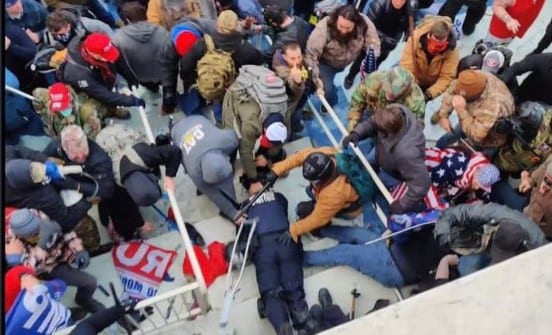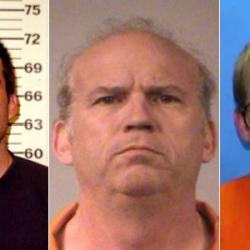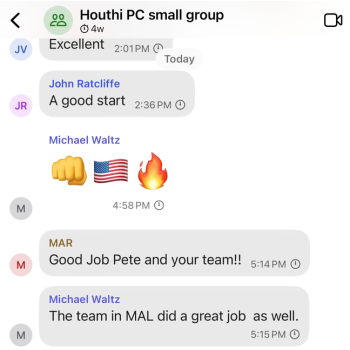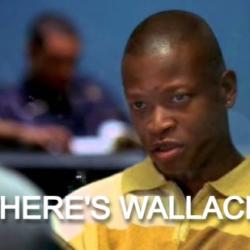Religion News Service has been running plenty of commentaries and reflections on the deadly insurrection at the Capitol on January 6 that sought to install Donald Trump as unelected president for life. Some of these have been thoughtful and insightful pieces on the role of religious groups and religious leaders in the aftermath of that ugly event and how to address the brutish hate still simmering among those who supported it.
And then there’s this one, from a white Southern Baptist pastor in Alexandria, Virginia — “I have election protesters and ‘Never Trumpers’ in my pews. How can we move forward together?” — which is even worse than that Very Bad headline makes it sound.

The pastor’s name and the name of his church are there at the link, but I’m not going to repeat them here because I do not want to encourage any kind of “pile on.” This poor dude is just a local pastor of a small church, not a powerful denominational leader or religious media figure wielding huge influence, so I don’t want to punch down here. This situation doesn’t call for punching at all, just maybe a glass of water splashed in his face or an attention-getting Cher-in-Moonstruck slap (“Snap out of it!”).
Because, again, this is Very, Very Bad. At times it is hilariously bad — such as in the pastor’s attempts to assert the inclusiveness and diversity of his congregation by describing its broad spectrum of political views. This church includes both people who voted for Trump in the 2016 primary and some who only voted for him in the general. (“Both kinds of music, son. Country and Western.”) And it’s ethnically diverse, too, the pastor insists, including “white and Black, Anglo and Latino.”
It’s heartwarming to see white people and Anglos coming together to worship like that.
But the main reason this Very Bad commentary is worth visiting is that it is instructively bad. It reflects and embodies archetypal mistakes and sins that pervade much of the whiteamerican church and much of whiteamerica. So it’s diagnostically useful as a case study.
And boy howdy is this ever a case study. Here’s how it starts:
I stepped into the pulpit on Jan. 10 feeling an extraordinary weight. Four days earlier, 11 miles from our church, some of those protesting the certification of the presidential election broke through glass, beat police with American flags and precipitated the first incursion into the U.S. Capitol building since the War of 1812.
The weight came not only from the disorienting images of the day but also from the disparate ways I knew those hearing my sermon viewed the week’s events.
I knew that watching online was the mother of “Elizabeth from Knoxville,” whose brief interview (“We’re storming the Capitol; it’s a revolution!”) had been seen millions of times online.
In the sanctuary sat a woman who had been praying at the Capitol on Jan. 6 in support of President Donald Trump, another who accepted QAnon narratives and a young man who just returned from campaigning for Sen. Kelly Loeffler in Georgia.
Also in the room was a Black immigrant who, out of his experience of American racism, later told me, “They wouldn’t have reached the Capitol doors if they had been a different color.”
So this church has members who actively supported the insurrection, the disenfranchisement of black voters, and the overthrow of democratic government in support of a white Herrenvolk ethnostate. OK, then.
Elizabeth’s mom being part of this congregation almost seems overwritten. If you’re one of the few people online who haven’t seen the “Elizabeth from Knoxville — I Got Maced” video, you can watch it here. It’s the distillation of the same hegemonic white entitlement that suffuses everything her mother’s pastor writes for RNS. Elizabeth was interviewed shortly after she was pepper-sprayed and forced back out of the Capitol building she was attempting to overrun and she wails about the unfairness of it all, as though here she was, innocently “storming the Capitol” in a “revolution,” when those uppity police officers had the gall to stop her with nonlethal force. She’s frustrated and confused and offended that our democracy didn’t just roll over and die in response to her “revolution” and seems like she’s intent on writing a negative Yelp review of the whole experience.
But Elizabeth’s mom is not an outlier in this congregation. The church’s in-person — masked or unmasked? I dread the answer — worship service on the Sunday after the insurrection also included at least one insurrectionist, one person who found the corrupt racist campaign of Kelly Loeffler so inspiring he traveled hundreds of miles to support it, and at least one Q-Anon addict.
Oh, there was also a Black guy “in the room.” He’s there because this church building is also host to a couple of immigrant congregations and this “Black immigrant” is the pastor of the Amharic-speaking congregation that meets there separately (the church also hosts a separate-but-equal Spanish-speaking congregation).
The sudden, spastically defensive mention of this “Black immigrant” is jarring here because the pastor describes and regards the man’s Blackness in the same manner that he describes and regards the political choices of the insurrectionist, the Loeffler-enthusiast, and the Q-Anoner. He sees and treats and responds to all of these as immutable, involuntary characteristics. This woman over here chose to devote her life to a hateful, outrageous, profane hoax from 8chan, but this man over here is Black and he chose to be born in another country. The pastor is deeply committed to leading the Q-Anon carrier in worship and he’s only slightly reluctant and condescending in his desire to also include the Black immigrant. And so it’s both sides, doncha know? And can’t we all just get along?
To the extent that there is any coherent theme to this piece, it’s the idea that political diversity and ethnic diversity are the same. Or, rather, that this pastor believes the same unsettling and dimly apprehended arguments that he’s heard others making about what they hold up as the worthy aspiration of ethnic diversity should be applied to the “political diversity” of his congregation, (which spans the gamut from A to B, from Trump to McConnell). He’s arguing that the “political diversity” of his congregation may make those other churches just as uncomfortable as their appeals for ethnic diversity make him, but that his church’s political diversity is just as deserving of respect.
Yes, his congregation includes insurrectionists, white supremacists, and antisemites, but that’s just who they are. And he sees himself as having the pastoral calling of meeting them there, just as they are, and leading them together in worship. You may be an insurrectionist, a racist, a bearer-of-false-witness-against-thy-neighbor — but we’re all saved by the same gospel and we can all come together to pray and worship in Jesus’ name. Can I get an “amen”?
This blasé, shrug-emoji response is even worse when we consider what would almost surely happen if, say, a nice lesbian couple showed up at this church one Sunday. My guess is they wouldn’t be welcomed with the same just-as-you-are embrace this pastor extends to the white supremacists and antisemites. I’d bet they would be shamed and shunned as people the pastor and his congregation viewed as willful sinners. Being lesbians, he’d argue, is a choice — a wicked choice and a sin, whereas being a Q-Anon antisemite or being someone who joins a lynch mob to prevent Black citizens’ votes from counting is just an innate accident of birth. The lesbian couple would hear a call to repentance that they don’t need to hear while the insurrectionists and racists will never hear the call to repentance that is their only hope for salvation.
In the ass-backwards perverse doctrine of this church and its pastor, being LGBTQ is an insurmountable obstacle to salvation, but violently supporting white supremacy and antisemitism is not. And everything that follows in this commentary flows from that.
Have I mentioned that this is Very, Very Bad? Because it’s Very, Very Bad.












